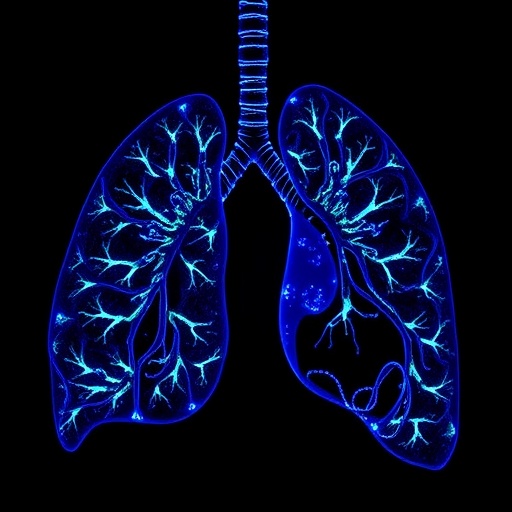Arizona emergency medical technicians' risk for suicide is 39-percent higher than the general public, according to a new study conducted by University of Arizona College of Medicine – Phoenix researchers.
Neil Vigil, a second-year UA medical student, and Bentley Bobrow, MD, associate director of the Arizona Emergency Medicine Research Center – Phoenix and professor in emergency medicine at the UA College of Medicine – Phoenix, recently completed the first peer-reviewed publication that specifically studied EMTs.
"Although we were bracing ourselves to find an increase in suicides among our EMTs, I was really shocked that it was that large," said Vigil, who is also a Tillman Scholar. "These findings help move the discussion of EMT suicide beyond the anecdotal and personal experiences and adds hard data showing there is a problem that needs to be addressed."
After seeing the surprising results, Vigil said he wanted to act immediately to find effective solutions. Working with the Arizona Department of Health Services (AZDHS), they developed an EMS resiliency website that presents educational materials and resources to help build resiliency and reduce EMS suicide.
Then he teamed up with the Golder Ranch Fire District near Tucson's Mount Lemmon to measure the effectiveness of resiliency training.
Vigil and Dr. Bobrow also are exploring the potential to incorporate resiliency and suicide-prevention training into the EMT certification process at the state level.
Suicide rates among the general population steadily have increased, with suicide now ranking in the nation's top 10 overall causes of death. Although the EMS profession has abnormally high suicide rates, as the results clearly showed, very little peer-reviewed research exists on the topic.
"On the worst days of our life, we know that firefighters and EMS professionals stand ready to respond at a moment's notice, even at the risk of their own personal safety," Vigil said.
"They are community heroes who sacrifice an incredible amount to be there for us in our time of need. I feel that it's our community's duty to help identify and minimize the risks associated with their service. As a former U.S. Army medic and EMT myself, this subject really connects with me on a personal level."
In 2014, a large North American survey conducted by the National Registry of Emergency Medical Technicians was published, suggesting EMTs have a 10-fold higher incidence of suicidal ideation and suicide attempts. Around the same time, the Arizona community had experienced several EMT suicide deaths.
"We started by asking the basic question, 'What is the suicide rate of EMTs in Arizona?'" Dr. Bobrow said. "As our research team began to try to answer this question, we realized that while simple, it was not an easy question to answer because there is no sole-source EMT suicide database. So we attempted to answer the question utilizing a combination of Arizona Death Record Data (searching for occupation fields in the Death Registry corresponding to EMT). It was extremely laborious, and imperfect, but it was a way we at least could estimate the true scope of this problem."
Their data set covers a five-year period ending in December 2015. Vigil started the research last fall as part of his UA College of Medicine – Phoenix "scholarly project," with Dr. Bobrow, serving as his mentor. The study was presented at the 2018 National Association of Emergency Medical Services Physician's meeting and recently published online in Prehospital Emergency Care. (DOI: 10.1080/10903127.2018.1514090)
"We were surprised at how many actual EMT suicides we found every year in Arizona – on average nine per year," Dr. Bobrow said. "Each one is a tremendous tragedy and made our study very personal for us. We were very motivated to publish this paper and to work toward improving this horrible situation."
They hypothesize that the causes of the high suicide rates are multi-factorial and likely are related to work stress, shift work, a culture of not wanting to ask for help, repeated exposure to seeing suicide and other tragedies, among other factors.
"Physicians not only are clinicians, but also scientists," Vigil said. "Our role as physicians is not only to practice medicine, but also to conduct research that adds to the body of knowledge that evidence-based medicine is drawn from. The scholarly project requirement at the UA College of Medicine – Phoenix does an excellent job pairing students with community mentors and providing guidance through the entire research process. I know I'll carry the skills I'm learning with my scholarly project into my career as a physician."
###
About the UA College of Medicine – Phoenix
Founded in 2007, the University of Arizona College of Medicine – Phoenix inspires and trains exemplary physicians, scientists and leaders to optimize health and health care in Arizona and beyond. By cultivating collaborative research locally and globally, the college accelerates discovery in a number of critical areas — including cancer, stroke, traumatic brain injury and cardiovascular disease. Championed as a student-centric campus, the college has graduated 433 physicians, all of whom received exceptional training from nine clinical partners and 1,800 diverse faculty members.
As the anchor to the Phoenix Biomedical Campus, which is projected to have an economic impact of $3.1 billion by 2025, the college prides itself on engaging with the community, fostering education, inclusion, access and advocacy. For more information, please visit phoenixmed.arizona.edu.
Media Contact
Teresa Joseph
[email protected]
602-827-2657
http://uahs.arizona.edu/
http://dx.doi.org/10.1080/10903127.2018.1514090




